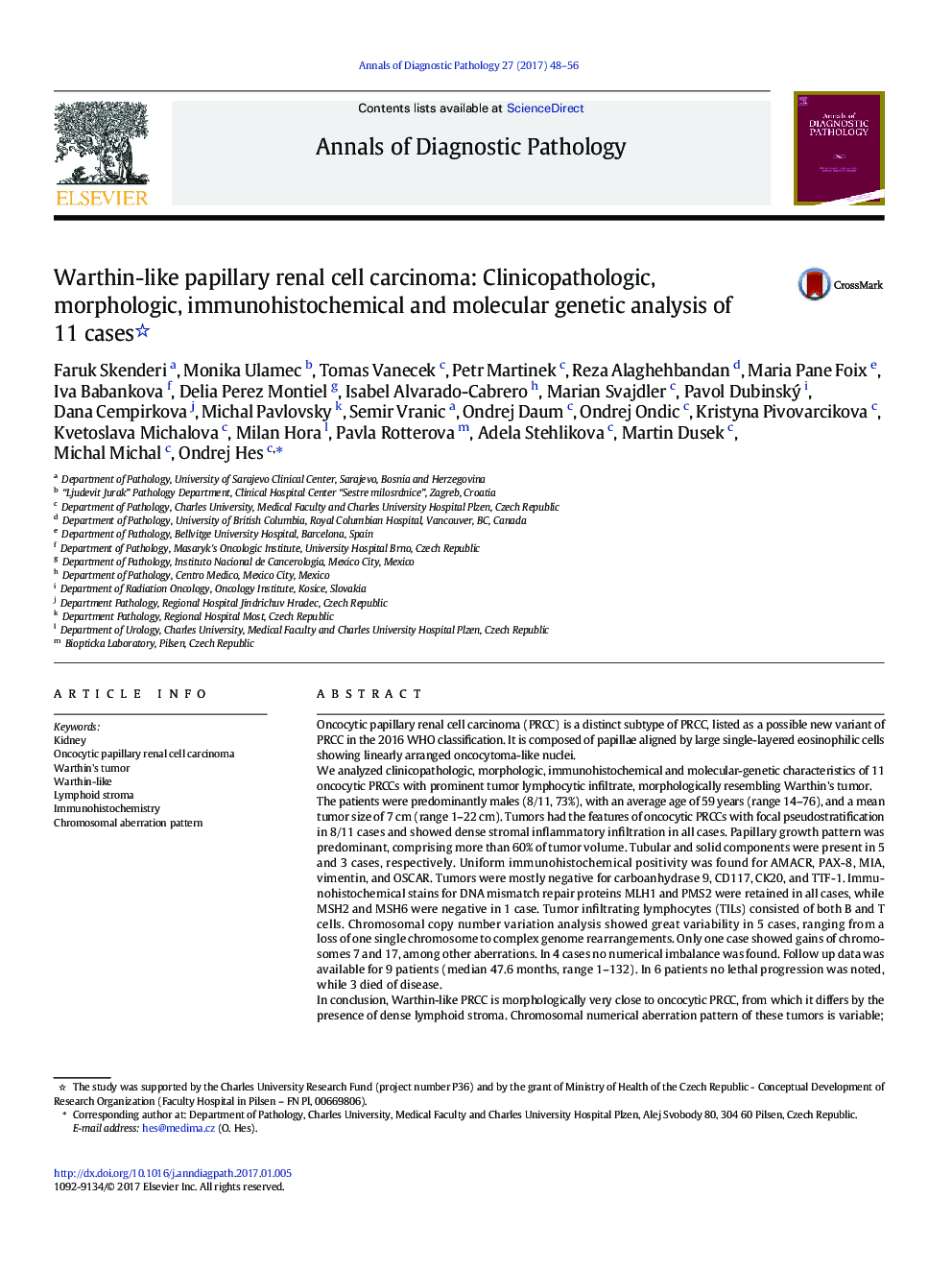| Article ID | Journal | Published Year | Pages | File Type |
|---|---|---|---|---|
| 5715902 | Annals of Diagnostic Pathology | 2017 | 9 Pages |
â¢Presenting series of distinct renal cell carcinomas with unusual morphologyâ¢All tumors were mostly papillary, composed of oncocytic cells with dense lymphocytic stroma.â¢Morphology resembled Warthin tumor of salivary gland, however immunohistochemical profile was typical of papillary RCC.â¢Chromosomal aberration pattern was variable.â¢Tumors followed non-aggressive clinical course in 6/9 patients, 3 patients died of disease.
Oncocytic papillary renal cell carcinoma (PRCC) is a distinct subtype of PRCC, listed as a possible new variant of PRCC in the 2016 WHO classification. It is composed of papillae aligned by large single-layered eosinophilic cells showing linearly arranged oncocytoma-like nuclei.We analyzed clinicopathologic, morphologic, immunohistochemical and molecular-genetic characteristics of 11 oncocytic PRCCs with prominent tumor lymphocytic infiltrate, morphologically resembling Warthin's tumor.The patients were predominantly males (8/11, 73%), with an average age of 59Â years (range 14-76), and a mean tumor size of 7Â cm (range 1-22Â cm). Tumors had the features of oncocytic PRCCs with focal pseudostratification in 8/11 cases and showed dense stromal inflammatory infiltration in all cases. Papillary growth pattern was predominant, comprising more than 60% of tumor volume. Tubular and solid components were present in 5 and 3 cases, respectively. Uniform immunohistochemical positivity was found for AMACR, PAX-8, MIA, vimentin, and OSCAR. Tumors were mostly negative for carboanhydrase 9, CD117, CK20, and TTF-1. Immunohistochemical stains for DNA mismatch repair proteins MLH1 and PMS2 were retained in all cases, while MSH2 and MSH6 were negative in 1 case. Tumor infiltrating lymphocytes (TILs) consisted of both B and T cells. Chromosomal copy number variation analysis showed great variability in 5 cases, ranging from a loss of one single chromosome to complex genome rearrangements. Only one case showed gains of chromosomes 7 and 17, among other aberrations. In 4 cases no numerical imbalance was found. Follow up data was available for 9 patients (median 47.6Â months, range 1-132). In 6 patients no lethal progression was noted, while 3 died of disease.In conclusion, Warthin-like PRCC is morphologically very close to oncocytic PRCC, from which it differs by the presence of dense lymphoid stroma. Chromosomal numerical aberration pattern of these tumors is variable; only one case showed gains of chromosomes 7 and 17. Warthin-like PRCC is a potentially aggressive tumor since a lethal outcome was recorded in 3/9 cases.
